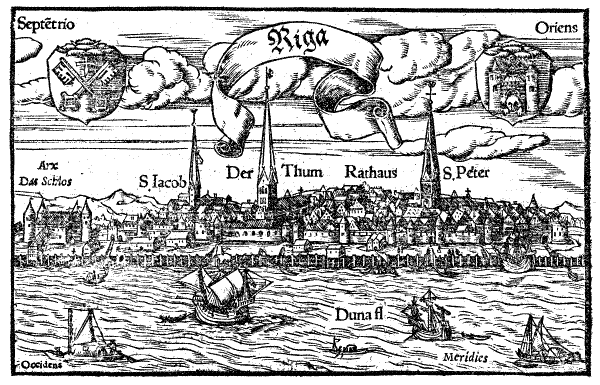|

The history of
Riga, the capital of
Latvia,
begins as early as the 2nd century with a settlement, the Duna urbs,
at a natural harbor not far upriver from the mouth of the
Daugava River. Later settled by
Livs
and
Kurs, it was already an established trade center in the early Middle Ages along the Dvina-Dnieper trade route to Byzantium. Christianity had come to Latvia as early as the 9th century, but it was the arrival of the Crusades at the end of the 12th century which brought the Germans and forcible conversion to Christianity; the German hegemony instituted over the Baltics lasted until independence - and is still preserved today in Riga's Jugendstil (German Art Nouveau) architecture.
From the 13th century to the birth of nationalism in the 19th and independence in the 20th, Latvia's and Riga's history are intertwined, a chronicle of the rise and fall of surrounding foreign powers over the Latvians and their territory. As a member of the
Hanseatic League, Riga's prosperity grew throughout the 13th-15th centuries with Riga to become a major center of commerce and later, industry, of whatever empire it found itself subject of.
Today, Riga and its environs are home to close to half of Latvia's inhabitants.
UNESCO has declared Riga's historical center a World Heritage site in recognition of its Art Nouveau architecture, widely considered the greatest collection in Europe, and for its 19th-century buildings in wood.
DOCUMENT PRESENTED FROM WIKIPEDIA
| 
